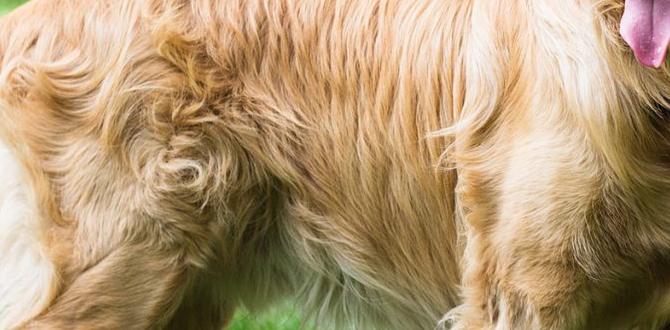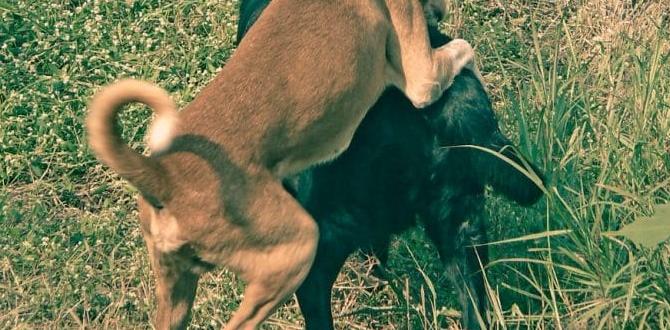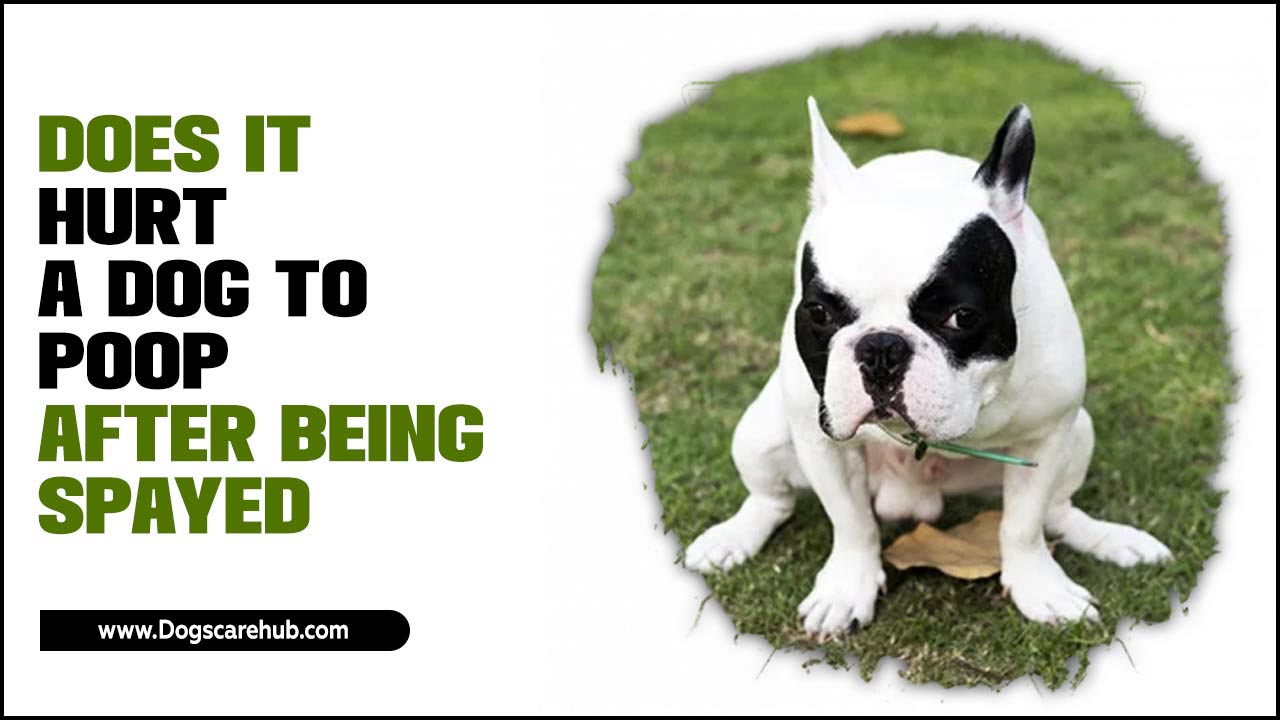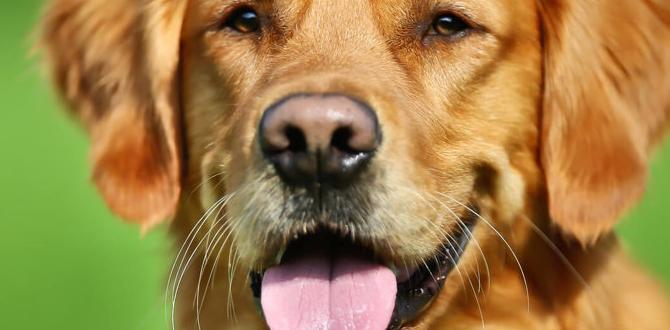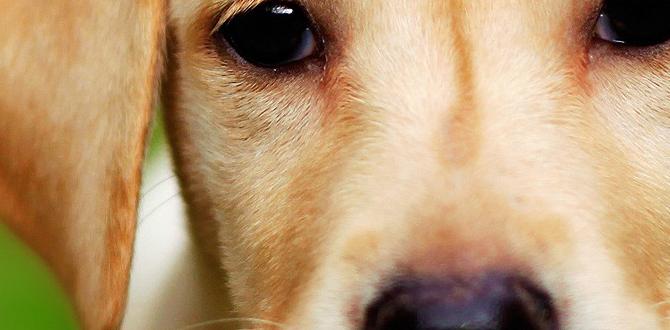Quick Summary: Mastering dog obedience training starts with positive reinforcement, consistency, and understanding your dog’s needs. Implement simple, effective techniques to build a strong bond and ensure a well-behaved canine companion. Success lies in patient, reward-based methods.
Welcoming a new dog into your home is a joyous occasion, filled with playful antics and unconditional love. But often, those adorable puppy eyes can quickly turn into a furry bundle of mischief and maybe a little chaos! Many of us dream of a dog who walks calmly on a leash, listens eagerly to commands, and settles nicely at home. If you’re finding yourself a bit overwhelmed or just want to strengthen your bond through better communication, you’re in the right place. This guide is packed with straightforward, proven dog obedience tips that will help you achieve training success without the stress. Get ready to transform your relationship with your furry friend!
The Foundation of a Well-Behaved Dog: Understanding the “Why”
Before we dive into specific training techniques, it’s helpful to understand the core principles that make dog obedience training so effective. At its heart, it’s all about clear communication and building a trusting relationship. Dogs don’t speak our language, so we need to learn theirs and create a system they can understand. This isn’t about dominance; it’s about partnership. When your dog understands what you want and is motivated to do it, everyone is happier.
Think of obedience training as teaching your dog life skills. Just like we teach children, dogs learn best through positive experiences, repetition, and clear expectations. This approach not only helps them learn commands but also boosts their confidence and strengthens the bond between you. A well-trained dog is a safer dog, and a more integrated member of the family.
Essential Dog Obedience Training Gear
Having the right tools can make your training sessions smoother and more effective. You don’t need a lot of fancy equipment, but a few key items can make a world of difference. Investing in quality gear means it will last and perform as expected, reducing frustration for both you and your pup.
1. A Good Quality Leash and Collar/Harness
Choose a sturdy, comfortable leash (a 4-6 foot standard leash is often recommended) and either a flat collar or, for better control and comfort, a well-fitting harness. For dogs that pull, a front-clip harness can be a game-changer. Ensure the collar or harness fits snugly but comfortably, preventing escape without causing chafing.
2. High-Value Training Treats
These are small, delicious treats that your dog absolutely adores. Think tiny pieces of cooked chicken, cheese, or specialized training treats. They should be more exciting than their regular kibble and just big enough to be consumed quickly so training isn’t interrupted.
3. A Clicker (Optional but Recommended)
A clicker is a small device that makes a distinct clicking sound. It’s used as a marker to pinpoint the exact moment your dog performs the desired behavior. The click is then immediately followed by a treat. This precise timing helps your dog understand exactly what they are being rewarded for.
4. A Treat Pouch
This handy accessory clips onto your belt or pocket, allowing you easy access to treats during training sessions. It keeps your hands free and ensures you can reward your dog quickly.
5. Durable Chew Toys
While not directly for obedience commands, providing appropriate chew toys is crucial for redirecting chewing behavior and keeping your dog mentally stimulated, which indirectly supports good behavior.
The Power of Positive Reinforcement: Your New Best Friend
Positive reinforcement is widely recognized by animal behaviorists and veterinarians as the most effective and humane way to train dogs. It focuses on rewarding desired behaviors, making it more likely your dog will repeat them. This method builds trust and strengthens your bond, turning training into a fun activity rather than a chore.
How does it work? When your dog does something you like – like sitting when asked, coming when called, or walking calmly beside you – you immediately reward them. The reward can be a treat, verbal praise (“Good boy!”), a favorite toy, or enthusiastic petting. The key is timing: the reward must come within seconds of the desired action so your dog can clearly make the connection.
Why Positive Reinforcement Wins:
- Builds Trust: Your dog learns that good things happen when they engage with you.
- Encourages Willingness: Dogs are more likely to try new things when they know they’ll be rewarded.
- Avoids Fear and Anxiety: Unlike punishment-based methods, positive reinforcement doesn’t promote fear or aggression.
- Strengthens the Bond: Training becomes a positive interaction, deepening your relationship.
- Reduces Stress: For both dog and owner, positive methods are generally more enjoyable and less confrontational.
Basic Obedience Commands: Step-by-Step Training
Let’s get started with some fundamental commands. Remember to keep training sessions short (5-10 minutes), fun, and frequent. End each session on a positive note, even if it’s with an easy command your dog already knows.
1. “Sit”
This is often one of the first commands dogs learn.
- Get Your Dog’s Attention: Hold a treat near your dog’s nose.
- Lure: Move the treat up and slightly back over your dog’s head. As their nose follows the treat, their rear end should naturally lower into a sit.
- Mark and Reward: The moment their hindquarters touch the ground, say “Sit,” give the click (if using a clicker), and immediately give them the treat and praise.
- Repeat: Practice several times in short sessions. Once they reliably sit with the lure, start phasing out the hand motion, eventually replacing it with just the verbal cue.
2. “Stay”
This command teaches impulse control and patience.
- Start with “Sit”: Have your dog sit.
- Introduce the Cue: Hold your hand up, palm facing your dog (like a stop sign), and say “Stay” in a clear, calm voice.
- Short Distance: Take just one or two steps back. If your dog stays, immediately return to them, praise, and reward.
- Gradually Increase: Over many sessions, slowly increase the distance and duration you ask them to stay. If they move, gently guide them back to the original spot and try again with a shorter duration or distance. Don’t scold; just reset.
3. “Come” (Recall)
This is arguably the most important command for safety.
- Start in a Safe Area: Begin in a quiet, enclosed space with no distractions.
- Use an Enthusiastic Tone: Say your dog’s name followed by “Come!” in a happy, inviting voice.
- Reward Lavishly: When your dog comes to you, praise them enthusiastically and give them a high-value treat or play with their favorite toy. Make coming to you the best thing ever!
- Practice with a Long Lead: Once they understand the cue in a small area, practice with a long leash in a larger, safe space. Never punish your dog if they eventually come to you but took their time; always make recall a positive experience.
4. “Down”
This command helps your dog relax and settle.
- Start from a Sit: Have your dog sit.
- Lure Downwards: Hold a treat at your dog’s nose and slowly lower it straight down between their front paws, then drag it a short distance away from them along the floor.
- Mark and Reward: As their elbows touch the floor, say “Down,” click (if desired), and reward them.
- Practice: Repeat. If your dog stands up, lure again. Once they easily follow the lure, start using the verbal cue “Down” with a minimal hand motion.
5. “Leave It”
Essential for preventing your dog from picking up dangerous items.
- Start with a Treat in Hand: Hold a low-value treat in a closed fist. Let your dog sniff and lick or paw at your hand.
- Reward for Disengagement: The moment they pull their nose away or look away from your hand, say “Yes!” (or click) and give them a different, higher-value treat from your other hand.
- Introduce the Cue: Once they understand that looking away earns a reward, start saying “Leave It” as they pull away.
- Progress to the Floor: Place a low-value treat on the floor and cover it with your hand. When they disengage, reward with a better treat. Gradually move to not covering the treat and eventually to walking past tempting items on the floor.
Consistency is Key: The Golden Rule of Training
You’ve probably heard it before, but it bears repeating: consistency is the absolute cornerstone of successful dog obedience training. This means everyone in the household is on the same page, using the same cues, and maintaining the same expectations. Inconsistency confuses dogs and slows down their learning process.
What does consistency look like in practice?
- Same Cues: If you use “Come,” don’t let your kids call “Here, boy!” interchangeably. Agree on one word for each command.
- Same Rules: If jumping on the couch is not allowed, it’s not allowed for anyone, anytime. If begging at the table is forbidden, enforce it every meal.
- Same Rewards: If you’re using treats for training, ensure everyone offers them for the correct behavior.
- Same Timing: Rewards and corrections (in the form of removing a reward or redirecting) should be immediate.
Think of it like learning a new skill yourself. If your instructor gave you different instructions each day, you’d get nowhere fast! Your dog appreciates the clarity that consistent training provides.
Troubleshooting Common Training Challenges
Even with the best intentions, you might run into a few bumps along the road. Don’t get discouraged! Most training challenges have simple solutions rooted in understanding your dog and adjusting your approach.
My Dog Won’t Listen in Public!
Cause: Too many distractions. Your dog’s environment is far more rewarding than your treat or cue.
Solution: Start recall and obedience training in a quiet area (like your living room), then gradually introduce higher-distraction environments. Use significantly higher-value treats when training outside. Keep sessions short and practice recall often from a distance. If they fail, you’ve likely asked too much too soon. Go back to an easier level.
My Dog Pulls Constantly on the Leash!
Cause: Your dog has learned that pulling gets them where they want to go.
Solution: Use a front-clip harness or a head halter for better control. When your dog pulls, stop walking. Only resume walking when the leash slackens. Reward them generously for walking by your side with a loose leash. Make loose-leash walking more rewarding than pulling!
My Dog Isn’t Motivated by Treats!
Cause: The treats might not be high-value enough, or your dog might be too full or stressed to eat.
Solution: Experiment with different small, smelly, and delicious treats (cooked chicken, hot dog pieces, cheese). Try training a few hours before a meal when your dog is hungrier. If your dog is too stimulated or anxious, they won’t be able to focus on training. Work on a calmer state first.
My Dog Still Has Accidents Indoors!
Cause: Could be a medical issue (see vet!), incomplete house-training, or excitement/submissive urination.
Solution: Always rule out medical causes with your veterinarian. For house-training, go back to basics: frequent potty breaks, abundant praise and rewards for success, and thorough cleaning of accidents with an enzymatic cleaner to remove scent. For excitement urination, manage your dog’s greetings, and don’t overstimulate them.
Beyond Basic Commands: Socialization and Behavior
Obedience training is fundamental, but a well-adjusted dog also needs good socialization and a solid understanding of acceptable behavior in various situations. Socialization is the process of exposing your puppy (ideally between 3 weeks and 14 weeks of age) to a wide variety of sights, sounds, people, and other animals in a positive way.
This critical period helps prevent fear and aggression later in life. Even if you have an older dog, continuing positive exposure to new experiences can help build their confidence. Organizations like the American Veterinary Society of Animal Behavior (AVSAB) emphasize the importance of early socialization for developing well-balanced dogs. You can find their position statement [here (note: link to an authoritative source like AVSAB website would be inserted here if possible)].
Beyond socialization, consider behaviors like:
- Jumping: Teach an alternative behavior, like sitting to greet people.
- Barking: Understand the reason for barking and address it accordingly.
- Chewing: Provide plenty of appropriate chew toys and redirect when necessary.
Training Techniques and Terminology Glossary
Here’s a quick look at some common terms and techniques you’ll encounter in dog training:
| Term/Technique | Description |
|---|---|
| Positive Reinforcement | Adding something the dog finds pleasant to increase the likelihood of a behavior occurring again. |
| Lure | Using a treat or toy to guide the dog into a desired position or action. |
| Clicker Training | Using a clicker as a bridge between the behavior and the reward, marking the exact moment the dog does something right. |
| Marker Signal | Any signal (like a clicker, a word like “Yes!”, or a tongue click) that precisely marks a desired behavior. |
| High-Value Treat | A treat that is exceptionally motivating to your dog, often used for difficult training cues or in high-distraction environments. |
| Cue | A word or hand signal that tells the dog what behavior you are asking for (e.g., “Sit,” “Stay”). |
| Reward | Anything the dog finds pleasurable that is given after performing a desired behavior. |
| Desensitization | Gradually exposing a dog to a stimulus at a low intensity that does not cause a reaction, then slowly increasing the intensity over time. |
| Counter-Conditioning | Changing the dog’s emotional response to a stimulus by pairing it with something pleasant. |
Advanced Training and Keeping it Fun
Once your dog has mastered the basic obedience commands, you can explore more advanced training to keep their mind engaged and your bond strong. This could include:
- Trick Training: Teaching fun tricks like “shake,” “roll over,” or “play dead” is a fantastic way to continue practicing command cues and rewarding your dog.
- Agility/Canine Sports: Activities like agility courses, nose work, or lure coursing provide physical and mental challenges that benefit many dogs.
- Therapy Dog Training: If your dog has the right temperament, they might be suited for visiting hospitals or nursing homes.
- Canine Good Citizen (CGC): The AKC’s Canine Good Citizen program tests a dog’s knowledge and manners in real-world situations and can be a great training goal. You can learn more about their programs on the American Kennel Club website.
Remember, the goal is always to keep training enjoyable. If you or your dog are getting frustrated, it’s time to take a break, try something easier, or simply end the session with a known success. A happy training experience leads to a happier, better-behaved dog.
Frequently Asked Questions About Dog Obedience Training
Q1: How long does it take to train a dog basic obedience?
A: The timeline varies greatly depending on the dog’s age, breed, individual personality, and the owner’s consistency. For basic commands like sit, stay, come, and down, you can often see significant progress within a few weeks of daily, short training sessions. However, mastering these commands in various environments takes longer. Patience and consistency are key!
Q2: At what age should I start obedience training?
A: You can start basic obedience and house-training as soon as you bring your puppy home, usually around 8 weeks old. Socialization is also crucial during this sensitive period. For adult dogs, it’s never too late to start training!
Q3: What’s the difference between positive reinforcement and punishment?
A: Positive reinforcement rewards desired behaviors to make them more likely to happen again. Punishment involves introducing an unpleasant consequence or removing something pleasant to decrease a behavior. While punishment might suppress a behavior temporarily, it can lead to fear, anxiety, or aggression and erode the trust between you and your dog. Most modern, effective training methods focus on positive reinforcement.
Q4: My dog is scared during training. What should I do?
A: If your dog is showing signs of fear (tail tucked, avoiding eye contact, lip licking, yawning, or trying to retreat), your training is likely too advanced or the environment is too overwhelming. Slow down, reduce the difficulty, increase the distance from any frightening stimuli, and use very high-value rewards. If fear is persistent or severe, consult a certified professional dog trainer or a veterinary behaviorist.
Q5: How often should I train my dog?
A: Short, frequent training sessions are much more effective than long, infrequent ones. Aim for 2-3 sessions a day, each lasting 5-10 minutes, especially with puppies or dogs new to training. Integrate training into your daily routine whenever possible!
Q6: Should I use treats for all training?
A: Treats are a powerful motivational tool, especially when starting out or teaching new behaviors. As your dog becomes more reliable, you can phase out treats for some cues and rely more on verbal praise, petting, or toys. However, always keep treats handy for challenging situations or to mark exceptionally good responses.
Conclusion: Your Journey to a Well-Behaved Companion
Embarking on dog obedience training is one of the most rewarding journeys you can take with your canine companion. By focusing on positive reinforcement, clear communication, and consistent practice, you’re not just teaching commands; you’re building a deeper understanding and an unbreakable bond. Remember to celebrate the small victories, be patient with setbacks, and always keep training sessions fun and engaging.
The tips and techniques shared here are designed to be practical for everyday dog owners. You have the tools and knowledge to create a well-behaved, confident, and happy dog. So, grab those treats, get on the floor, and enjoy the process. Your dog is eager to learn and even more eager to please you. Happy training!
Meet Elyse Colburn, the devoted canine companion and storyteller behind the enchanting world of “Tales, Tails, and Adventures Unleashed.” A passionate dog enthusiast with a heart full of paw prints, Elyse Colburn shares heartwarming tales and insightful adventures, celebrating the joy, loyalty, and endless antics that make every dog a true hero. Join Elyse Colburn on this tail-wagging journey, where every post is a love letter to our four-legged friends.

